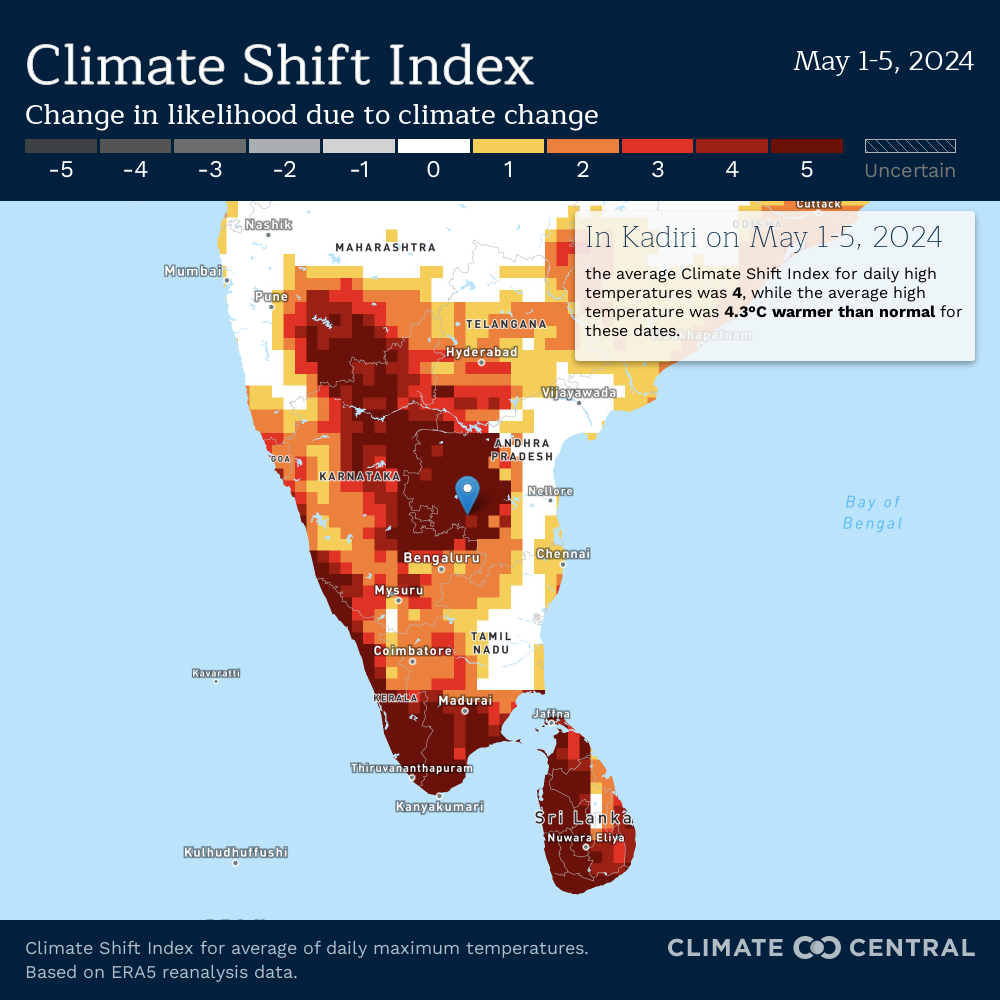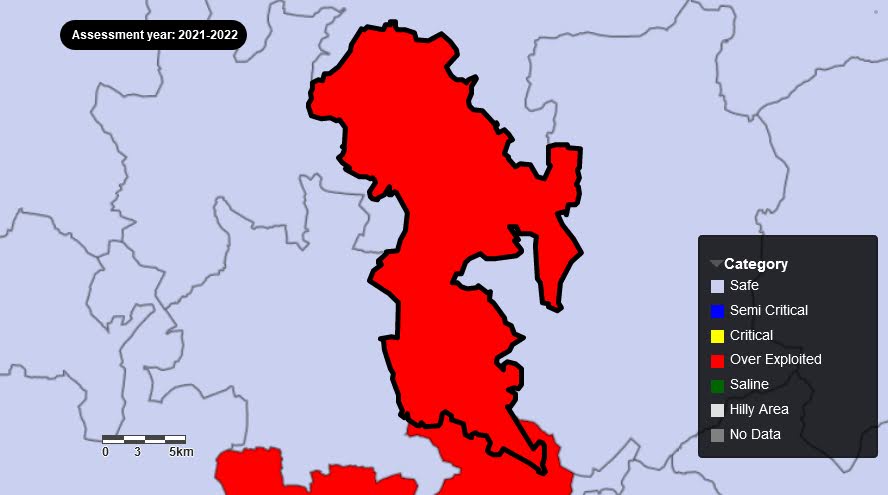
May 2024 has shattered many global temperature records on land and in the oceans. It was no different, as parts of India recorded some of its harshest temperatures. With the imminent onset of La Niña and the summer monsoon rainfall expected at 106% of the long period, it is easier to lose track of the changing realities. For instance, Delhi weather swung from intense heatwave to deluge and destruction within a few weeks in May-June, and in Bengaluru, dwindling water availability in March made way to waterlogging in May.
One month into this monsoon season, rainfall is highly variable across the country. While Punjab and Western Uttar Pradesh have recorded large deficiencies, Rayalaseema in Andhra Pradesh, the driest region outside the Thar, recorded a large excess in the first three weeks of June. During this period of too little or too much rain, some of us were trying to understand the groundwater management techniques implemented by farmers around Kadiri in Sri Satya Sai District, located about 150 kilometres northeast of Bengaluru in the Rayalaseema region of Andhra Pradesh.
The Rayalaseema region, including Kadiri, has most farmers depending on rainfall and groundwater for agriculture. For over ten years, a water-sharing arrangement has been in place between farmers with borewells and rainfed farmers in some villages here. In May this year, the Watershed Support Services and Activities Network (WASSAN), which helped conceive and implement groundwater sharing, initiated a study to understand its outcomes. Our pilot study coincided with higher-than-usual temperatures in the region and the peninsula.

The Climate Shift Index by the Princeton-based non-profit Climate Central notes that the high temperature experienced in Rayalaseema during the first week of May was made four times more likely now by anthropogenic climate change. With the global average temperature already climbing 1.5°C above the 1850–1900 average, groundwater management has never been more important for the semi-arid Rayalaseema, and its learnings could have policy implications for similar landscapes elsewhere in India and even the world.
The groundwater situation

Groundwater, borewells, and their management are central to the socio-economic fabric of Rayalaseema. Groundwater is already in the overexploited category in the Gandlapenta mandal near Kadiri, where four water-sharing groups were formed between 2009 and 2015. Though the surrounding blocks are marked as safe, bores go more than 600 feet to reach the aquifers there. During the pilot, we visited one village in the overexploited Gandlapenta and the adjacent safe Nallacheruvu.
The study aims to discern the long-term outcomes of groundwater-sharing agreements in establishing social norms and community governance structures through Water Interest Groups (WIG). A pilot phase is not where one normally looks for results. However, the results of the mechanisms were evident from the agricultural fields and farmers' responses. The intervention is a blend of infrastructure support and innovative community governance approaches for groundwater management. The existing legal framework on groundwater governance tends to prioritise private groundwater extraction, even at exploitative levels, over community stewardship. In this context, the voluntary sharing arrangement between individual farmers is significant.
Groundwater collectivisation
The groundwater sharing agreement provides critical irrigation to the fields of rainfed farmers as part of the WIG. A cursory glance at the clauses of the groundwater sharing agreement may suggest that it is disadvantageous to the bore owners. They have to bear the expenses of any repair during the summer; the user fee to be paid by them (decided by the WIG) is ten times (₹1000) that of a rainfed farmer (₹100); and no borewells are to be dug during the tenure of the agreement except with the permission of the WIG. Thus go the clauses.
However, the piped network allows the bore-owning farmers to irrigate their hitherto unirrigated land far from the borewell. Also, in case of any reduction in the discharge from their own borewell, adequate water is assured through other bores in the network. These mechanisms make it an attractive proposition to both groups of farmers.
“A major difference between the WASSAN-supported initiative and other groundwater management initiatives is the installation of piped networks in the former. The provision of multiple outlets and sub-branches made it possible to provide critical irrigation to rainfed plots 4-5 kilometres away from the borewell, even in elevated terrain. A visible outcome of this process is crop diversification into floriculture and horticulture, supported by drip irrigation,” says MV Ramachandrudu, former Executive Secretary of WASSAN.

Assured critical irrigation has allowed more farmers to grow flowers like jasmine and firecracker (Crossandra infundibuliformis). Mango orchards have also increased, often supported by drip irrigation. From the pilot study across two villages, farmers believe they are better off with the sharing in place. Besides water availability, it has also helped in marketing the crops as middlemen and agents have started visiting the village for procurement as more people are into farming.
Bigger picture
However, many aspects of groundwater sharing need to be studied to gauge its impact at the community and landscape levels. The change in water availability, income and livelihood opportunities within and outside the WIG or village must be understood. Between 2007 and 2018, groundwater collectives were set up across sixty locations across Andhra Pradesh and Telangana. The outcomes from each location would be different, and it is important to learn what worked, what did not, and why.
For this purpose, the evolution of community governance structures needs to be studied in consonance with the biophysical parameters. The upcoming study acknowledges this nuance, with WASSAN focusing on the governance aspects and WELL Labs on the biophysical features. This complementary exercise is expected to bring useful insights into groundwater governance in the coming months.
Author
Swaran V. is with the Watershed Support Services and Activities Network (WASSAN), Hyderabad. Views are personal.
/articles/scarcity-sharing-how-farmers-are-managing-groundwater-rayalaseema